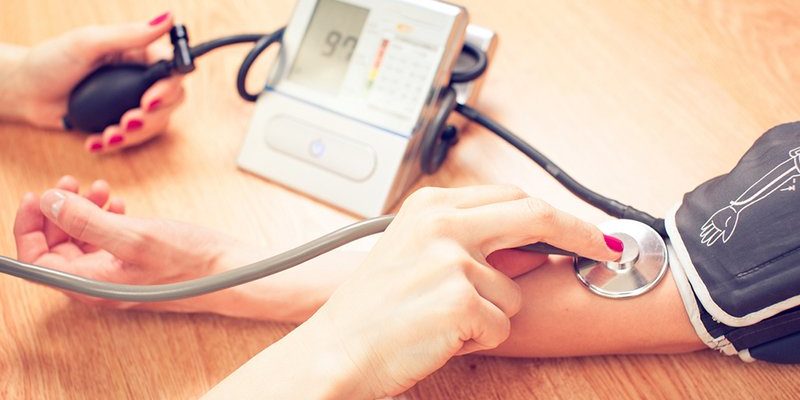Blood is carried from the heart to all parts of your body in vessels called arteries. So what is blood pressure? Blood pressure is the force of the blood pushing against the walls of the arteries each time the heart beats (about 60-70 times a minute at rest).
v Systolic (top number): Your blood pressure is at its highest when the heart beats, pumping the blood.
v Diastolic (bottom number): When your heart is at rest, between beats, your blood pressure falls
High blood pressure is considered a reading of 140/90 or higher and is a serious problem to have. High blood pressure is often called the “silent killer” because it usually has no symptoms. Some people may not find out that they have it until they have trouble with their heart, brain or kidneys. Nearly 1 in 3 American adults has high blood pressure.
What causes high blood pressure?
Many times high blood pressure is lifestyle or environmentally related:
v Stress
v Smoking
v Overweight
High blood pressure is more common in older adults.
Over half of all Americans age 60 and older have high blood pressure.
Additional Risk Factors are if you:
q Are overweight
q Are a man over the age of 45
q Are a woman over the age of 55
q Have a family history of high blood pressure
q Have “prehypertension” (120-139/89-89)
Other things that can raise your blood pressure include:
q Eating too much salt
q Drinking too much alcohol
q Not eating enough potassium
q Not exercising
q Taking certain medicines
q Stress that is long-lasting
q Drinking coffee
q Smoking
How Can I Track My Blood Pressure?
• Purchase an automated cuff and check your blood pressure at your convenience at home.
• Visit your local pharmacy. Walgreens, CVS, and many local grocery stores with pharmacies have free blood pressure check stations.
• Write down your blood pressures in a log or download a user friendly application on your phone.
Some people’s blood pressure is high only when they visit the doctor’s office. This condition is called “white coat” hypertension.
How do I prevent high blood pressure?
ü Keeping a healthy weight.
ü Being physically active.
ü Following a healthy eating plan that emphasizes fruits, vegetables, and low-fat dairy foods.
ü Choosing and preparing foods with less salt and sodium.
ü Drinking alcohol in moderation if you drink.
Talk to your doctor if you feel like you may be at risk or currently have high blood pressure.
References
• Flegal, KM, Carroll, MD, Ogden, CL, Curtin, LR. Prevalence and Trends in Obesity Among US Adults, 1999–2008. Journal of the American Medical Association. 2010; 235–241.
• Overweight and Obesity. Centers for Disease Control. https://www.cdc.gov/obesity/data/adult.html
• Obesity in the United States. Tuesday November 29th, 2011. Obesity aid.org. http://www.obesityaid.org/surgical-weight-loss/obesity-in-the-united-states/
• How to Boost Your Metabolism, Four Factors that Slow Your Metabolism; Diabetic Living. http://www.diabeticlivingonline.com/diet/tips/boost-metabolism/?page=2
• Sierra-Johnson et al. Eating Meals Irregularly: A Novel Environmental Risk Factor for the Metabolic Syndrome. Obesity, 2008; 16 (6): 1302 DOI: 10.1038/oby.2008.203
• MacDonald, Ann; Why eating slowly may help you feel full faster. Harvard Mental Health Letter. October 19, 2010 http://www.health.harvard.edu/blog/why-eating-slowly-may-help-you-feel-full-faster-20101019605
• Healthy Weight – it’s not a diet, it’s a lifestyle! Centers for Disease Control. http://www.cdc.gov/nccdphp/dnpa/nutrition/nutrition_for_everyone/healthy_weight/drinks.htm
• http://www.choosemyplate.gov/food-groups/dairy.html
• Powers, Scott K., and Stephen L. Dodd. Total Fitness and Wellness. San Francisco: Benjamin Cummings, 2003.
Print.







